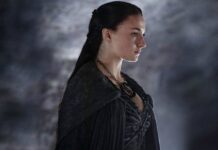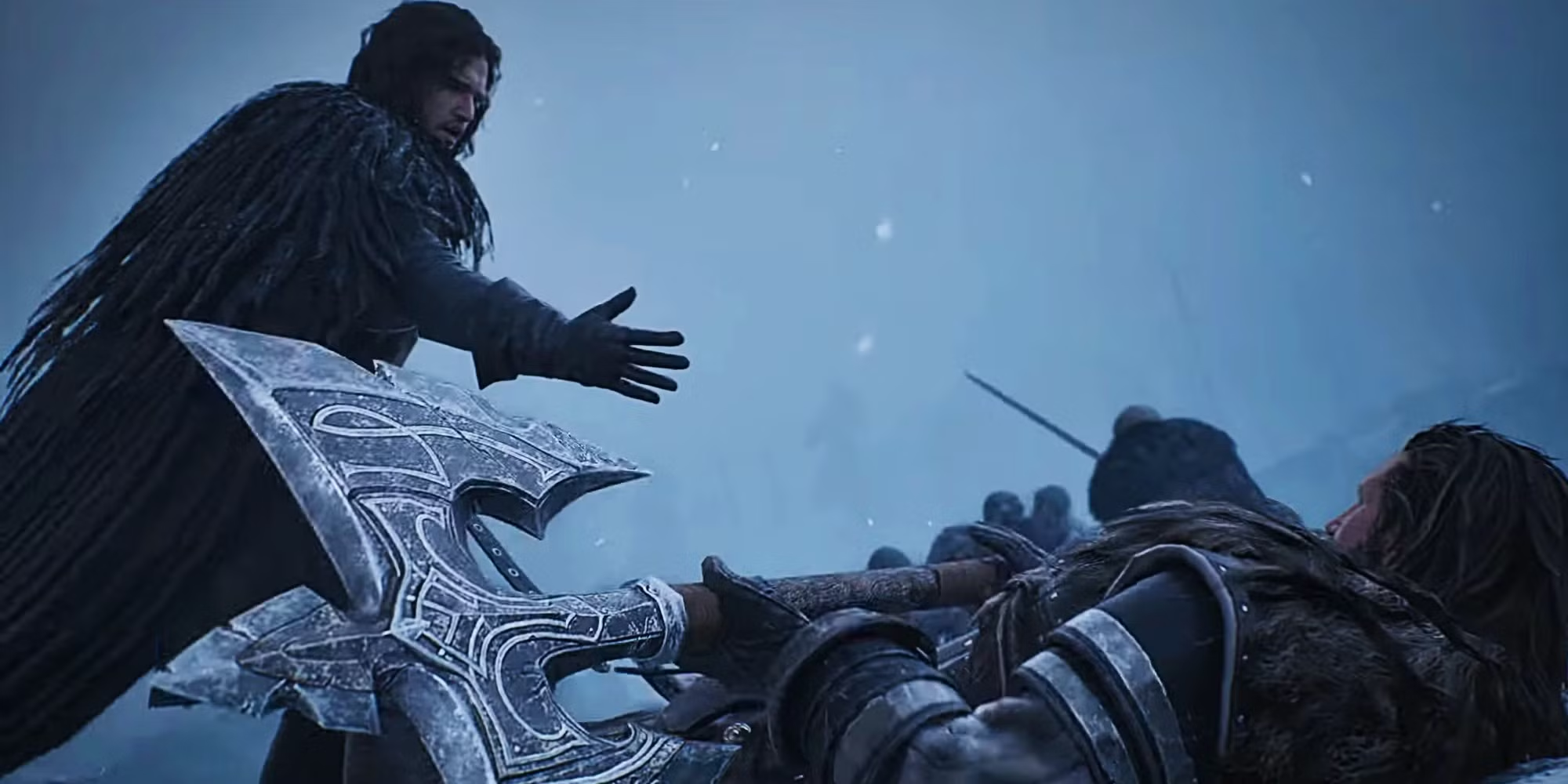Of all of the scenes in the final trailer for Stars: Wars The Rise of Skywalker, among the most chilling is the one that depicts Rey and Kylo Ren standing opposite of each other in the ruins of Palpartine’s throne room within the second Death Star. It’s difficult not to see the similarities to not only Luke’s confrontation with the Emperor in The Return of the Jedi, but also with an entirely different franchise, set in another galaxy: Game of Thrones, in which the final confrontation between the series protagonists also took place in the ruins of a throne room, and ended with Jon Snow killing his queen, Daenerys.
Click the button below to start this article in quick view.
The parallels were noticed by Twitter user Riri, who assembled a side-by-side image comparison:
From the lighting to the camera angles to the elevated position of Rey relative to Kylo, all of the elements seem echo those of that crucial scene of Game of Thrones‘ divisive finale, and to evoke a very specific feeling in the audience, something that has been teased since the D23 Expo sizzle reel: that Rey may go deeper into the Dark Side than Kylo ever did, pulled in by the power of the throne and what it represents: an end to the war, safety for her friends, and, just maybe, control over her new powers and her rage. There’s even a shot of the Emperor’s throne approaching Rey that’s evocative of the hypnotic pull the Iron Throne had on Daenerys.
RELATED: Star Wars: Is Rey an Embodiment of the Force Like Anakin Was?
It’s difficult to ignore that Rey is standing on Palpatine’s spot from Return of the Jedi, while Kylo holds Luke’s position. On Game of Thrones, Jon supplicates to his queen, only to have his requests for mercy for the people rebuffed, which brings him to bleak conclusion: that, to save Westeros, he must kill the woman he loves.
Rey’s journey in Star Wars similar to Daenerys’. Even geographically, they begin in warm settings as exploited orphans who must fight for scraps of power. Both possess empathy, which allows them to forge alliances and to establish a power base, and both of them are “Chosen Ones,” with Daenerys having the power to control dragons, and Rey being the last Jedi. The final act of The Last Jedi placed Rey in a position similar to that of Daenerys after she saved Winterfell, but there are subtle clues throughout the trailer — Poe’s distrustful look when she pilots the Millennium Falcon, her assertion that “Nobody understands her,” and so on — that hint she doesn’t feel accepted.
However, Disney wouldn’t dare to go there, would it? After all, Game of Thrones’ finale was incredibly divisive, not only because it felt rushed, but because it relied on the tired trope of women being unable to hold power without going mad, something that doesn’t quite match the brand of an entertainment corporation built around princess franchises and girl power. On the other hand, refusing to acknowledge the darkness that lies within Rey would be a discredit to her character arc and growth: Every great hero has a dark side that must be confronted at some point in their journey, often at the same time they try, but fail, to reintegrate the “normal” world. It makes sense, then, that Rey, who states outright that nobody knows her, would have to face and integrate her darker nature to achieve balance, just like Kylo has to accept he might have a ray of sunshine hidden deep within his black armor.
Structurally, this throne room showdown makes sense, because it highlights J.J. Abrams’ assertion that Rey and Kylo are two sides of the same character, showing how her journey is the opposite of his.
There’s also a key difference: Daenerys; descent was accelerated by her increasing isolation from her allies, who dropped from her side one by one. However, in the trailer, Rey’s friends express their affection for her at least four times: Finn, in the beginning, when he talks about how the Force brought them together; Kylo, when he states that he does know her; Leia, when she hugs Rey; and finally C-3PO, when he “looks at his friends, one last time.”
In Star Wars, that a character has a dark side does not mean he or she should be struck down. Keep in mind that Abrams has promised a fairy tale in space, and not a bleak metaphor of power madness in a ruthless fantasy world.
Directed and co-written by J.J. Abrams, Star Wars: The Rise of Skywalker stars Carrie Fisher, Mark Hamill, Adam Driver, Daisy Ridley, John Boyega, Oscar Isaac, Anthony Daniels, Naomi Ackie, Domhnall Gleeson, Richard E. Grant, Lupita Nyong’o, Keri Russell, Joonas Suotamo, Kelly Marie Tran, with Ian McDiarmid and Billy Dee Williams. The film arrives on Dec. 20.




















![[Book Review] The Blade Itself (The First Law Trilogy) by Joe Abercrombie](https://bendthekneegot.com/wp-content/uploads/2018/01/1516047103_maxresdefault-218x150.jpg)

















